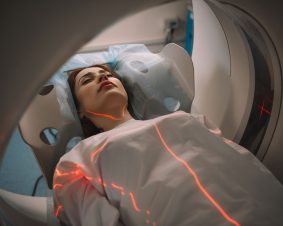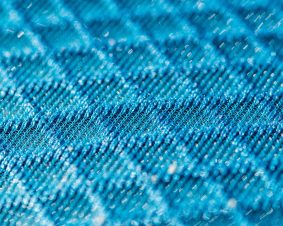 >
Spotlight November 2020: Nanotechnology in the public perception
>
Spotlight November 2020: Nanotechnology in the public perception
In November, we would like to draw your attention to a publication that examines public perception of the safety of nanomaterials in Austria.It shows, that although there is generally a rather positive attitude towards nanomaterials, there are different opinions on safety issues from different social groups. Further clarification seems necessary.
Despite the widespread use of nanomaterials in everyday life, consumer knowledge of the functions, benefits and potential risks of nanotechnology is still limited. As with any developing technology, their public perception has direct implications for future policy and needs to be taken into account by both academia and industry. Within the interdisciplinary research project “Nan-O-Style”, an online survey was conducted with an approach guided by the citizen science community. The main objective was to evaluate the current state of knowledge and attitudes towards nanotechnology in the general Austrian public and to determine how different socio-demographic factors can influence them.
Although Austrians generally have an optimistic and positive attitude towards nanotechnology, there are still concerns about its safety and possible risks. Participants expressed a strong desire for more information about nanotechnology and its applications, as well as for clear labeling and transparency of products containing nanomaterials. A consideration of various sociological factors was also made.
Original Publication::
Isabella A. Jouberta, Mark Gepperta, Stefanie Essa, Reinhard Nestelbacherb, Gabriele Gadermaiera, Albert Duschla, Arne C. Bathkec, Martin Himlya (2020) Public perception and knowledge on nanotechnology: A study based on a citizen science approach. NanoImpact 17. doi.org/10.1016/j.impact.2019.100201

Weitere Spotlights
Spotlight October 2020: Nanosafety – Topic of the Future
Research on nanosafety is a driver of innovation as the spotlight in July has demonstrated. But furthermore, this research field is built on routine as well if researchers look for the “needle in the haystack”. In many areas the safety research initiates the development of new methods, e.g. for the determination of nanoparticles within exposed organisms via […]
Read moreSpotlight December 2022: Fighting tumors with micro robots
When we, the DaNa team as operators of the website nanopartikel.info, write about nanobots, i.e. nanometre-sized machines, we point out that these machines belong to science fiction, may even remain a utopia – i.e. never realisable. On the significantly larger micro-scale, however, small machines are conceivable that could help in the therapy of diseases, e.g. […]
Read moreSpotlight February 2023: New sustainable and promising method to give cotton textiles an antiviral and antibacterial finish
Textiles have been the subject of research into functionalization for many years, especially also to repel bacteria and viruses. Since the development of nanotechnological processes, there have been many attempts to incorporate UV protection with nano-titanium dioxide, or to provide textiles with anti-bacterial properties with nanosilver (see cross-sectional text “Nanoparticles in Textiles”). But nanosilver has […]
Read moreSpotlight Juli 2020: “Nanosafety – More than just regulatory processes”
Nanosafety is more than just a compulsory aspect of nanomaterials research and regulation. This research area also has great potential to drive new innovations. It is exactly this perspective that is addressed in the special issue “Rethinking Nanosafety: Harnessing Progress and Driving Innovation” by Chen et al. 2020. The article illustrates that especially in the field of […]
Read more


